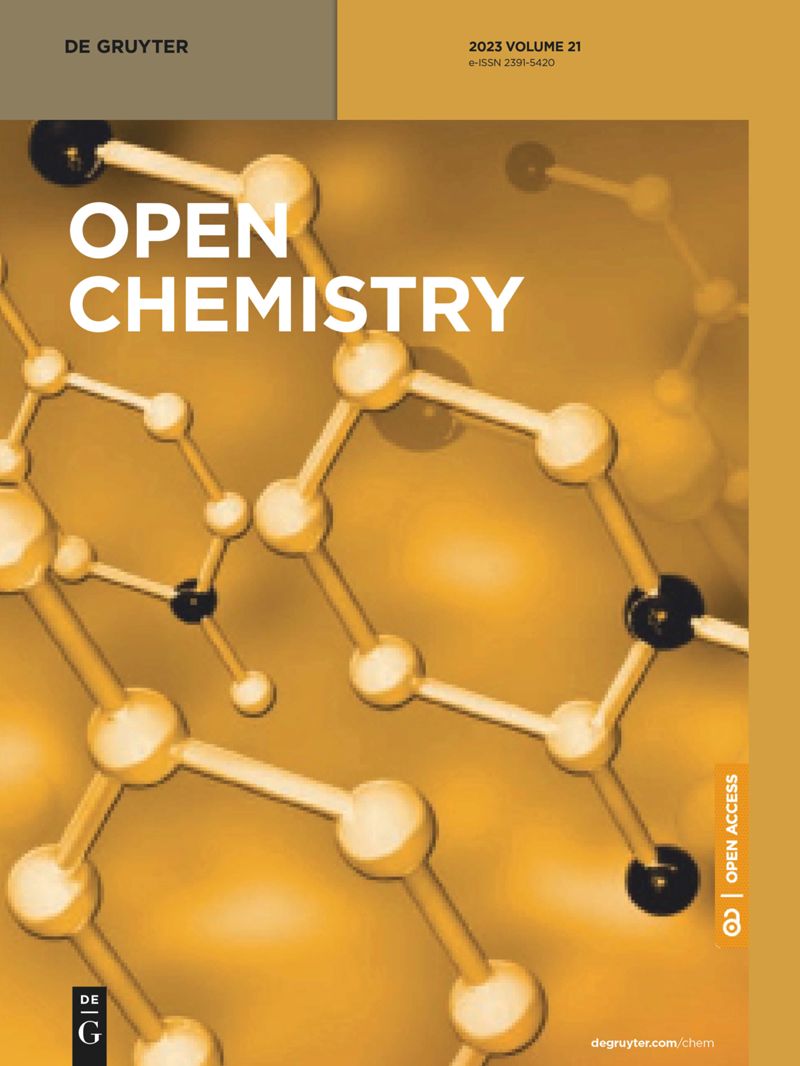针对乳腺癌的新型苯乙烯喹啉衍生物的三维-QSAR、分子对接、ADMET、模拟动态和逆合成研究
IF 1.9
4区 化学
Q3 CHEMISTRY, MULTIDISCIPLINARY
引用次数: 0
摘要
美国癌症协会指出,乳腺癌是女性最常见的疾病,占所有确诊病例的 25%。目前的研究重点是研究 43 种苯乙烯喹啉衍生物化合物作为潜在的微管蛋白抑制剂,以设计出一种可能对人类乳腺癌细胞有效的新药。对目标化合物进行了三维定量结构-活性关系/比较分子相似性指数分析(CoMSIA)方法,其中使用了CoMSIA模型,得到的最佳结果是(Q 2 = 0.84,R 2 = 0.97,r ext 2 {r}_{\text{ext}}^{2} = 0.91),通过研究等高线图发现H键受体场对增加抑制活性很重要(54%),在预测抗癌活性中起着关键作用。根据 CoMSIA 模型的等高线图,我们获得了一些信息,从而提出了比文献中发现的 43 种化合物具有更强抑癌活性的 4 种新分子。通过分子对接确定了小管蛋白(PDB ID:4O2B)与所提议的化合物之间可能的结合类型,结果显示 M1 的总分较高,为 6.53 分,并有两个重要的常规氢键类型的相互作用,其次是化合物 M2,总分为 5.74 分。此外,根据吸收、分布、代谢、排泄和毒性特性,所设计的分子显示出更好的药代动力学特性。为了证实所选配体(M1 和 M2)与小管蛋白的结合稳定性,我们进行了 100 ns 的分子动力学模拟。本研究使用的模拟参数包括均方根偏差、均方根波动、H 键、Rg、溶剂可接触表面积和结合能。结果表明,所设计的化合物(配体 M1 和 M2)具有抑制乳腺癌的潜在作用,可作为候选药物进行体内和体外实验。最后,这项工作中的逆合成研究促进了候选药物的合成。本文章由计算机程序翻译,如有差异,请以英文原文为准。
3D-QSAR, molecular docking, ADMET, simulation dynamic, and retrosynthesis studies on new styrylquinolines derivatives against breast cancer
Breast cancer is the most common illness among women, accounting for 25% of all diagnoses, as stated by the American Cancer Society. Current research focuses on 43 compounds of styrylquinoline derivatives as potential inhibitors of tubulin to design a new drug that could potentially be effective against breast cancer cells in humans. The target compounds were subjected to a three-dimensional quantitative structure-activity relationship/comparative molecular similarity indices analysis (CoMSIA) approach, where CoMSIA models were used; the best results obtained are (Q 2 = 0.84, R 2 = 0.97, r ext 2 {r}_{\text{ext}}^{2} = 0.91), H-bond acceptor field was discovered to be important for increasing inhibitory activity by examining the contour maps (54%), and it plays a key role in the prediction of anticancer activity. Based on the contour maps of the CoMSIA models, we obtained information that allows us to propose four new molecules with higher cancer inhibitory than the 43 compounds found in the literature. The molecular docking was applied to determine the likely types of binding between the tubulin protein (PDB ID: 4O2B) and the proposed compounds, and the results show that M1 has a higher total score of 6.53 and two interactions with important conventional hydrogen bond type, followed by compound M2 with a total score of 5.74. Furthermore, the designed molecules showed better pharmacokinetic properties based on absorption, distribution, metabolism, excretion, and toxicity properties. Molecular dynamics simulations at 100 ns were conducted to confirm the binding stability of the selected ligands (M1 and M2) with tubulin protein. The simulation parameters used in the current study are root mean square deviation, root mean square fluctuation, H-bond, Rg, solvent accessible surface area, and binding energy. As a result, the designed compounds (ligands M1 and M2) have shown noteworthy potential as a drug candidate for experimental in vivo and in vitro testing due to their potential inhibition of breast cancer. Finally, the study of retrosynthesis in this work facilitates the synthesis of drug candidates.
求助全文
通过发布文献求助,成功后即可免费获取论文全文。
去求助
来源期刊

Open Chemistry
CHEMISTRY, MULTIDISCIPLINARY-
CiteScore
3.80
自引率
4.30%
发文量
90
审稿时长
6 weeks
期刊介绍:
Open Chemistry is a peer-reviewed, open access journal that publishes original research, reviews and short communications in the fields of chemistry in an ongoing way. The central goal is to provide a hub for researchers working across all subjects to present their discoveries, and to be a forum for the discussion of the important issues in the field. The journal is the premier source for cutting edge research in fundamental chemistry and it provides high quality peer review services for its authors across the world. Moreover, it allows for libraries everywhere to avoid subscribing to multiple local publications, and to receive instead all the necessary chemistry research from a single source available to the entire scientific community.
 求助内容:
求助内容: 应助结果提醒方式:
应助结果提醒方式:


